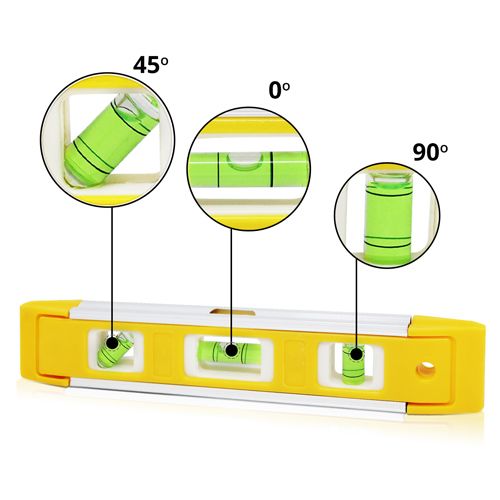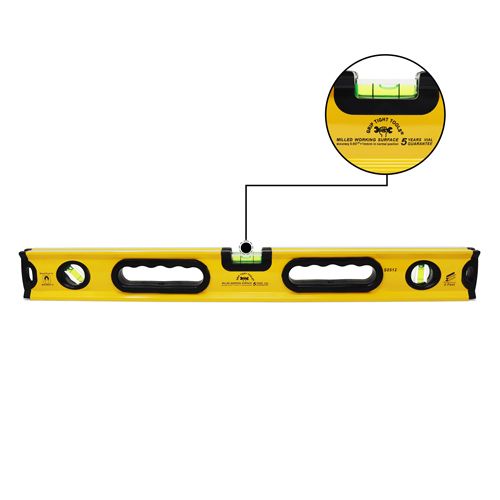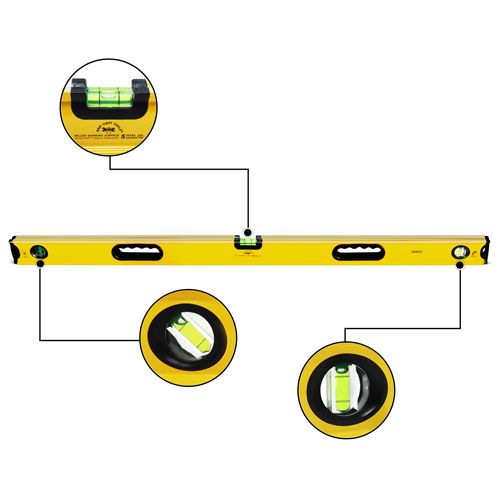FREE SHIPPING ON ORDERS $35+ (Excludes Bulky Items)
Magnetic Levels
MAGNETIC LEVELS FAQ's
What are Magnetic Levels?
Magnetic levels are tools that use magnets to adhere to metal surfaces and measure the levelness or slope of an object. They come in different shapes, sizes, and features depending on the application. For example, some magnetic levels have a pitch gauge that reads slope in 1/8" increments, while others have rare earth magnets for extra-strong adhesion. Magnetic levels are commonly used for carpentry, steel erection, fencing, and other construction projects that involve metal objects.
Types of Magnetic Levels
- Diamagnetism: A weak form of magnetism that occurs when the magnetic field induces a negative magnetization in the material, meaning the material opposes the applied field. All materials are diamagnetic, but this effect is usually masked by other forms of magnetism. Superconductors are perfect diamagnets and expel magnetic fields from their interiors.
- Paramagnetism: A form of magnetism that occurs when the magnetic field aligns the magnetic moments of some atoms or molecules in the material, resulting in positive magnetization. Magnetization is proportional to the applied field and disappears when the field is removed. Paramagnetic materials have a small positive susceptibility and a relative permeability slightly greater than one. Examples of paramagnetic materials are oxygen, aluminum, and platinum.
- Ferromagnetism: A form of magnetism that occurs when the magnetic field causes a strong and permanent alignment of the magnetic moments of some atoms or domains in the material, resulting in a large and spontaneous magnetization. The magnetization persists even after the field is removed and can only be changed by heating or applying a stronger field. Ferromagnetic materials have a large positive susceptibility and a relative permeability much greater than one. Examples of ferromagnetic materials are iron, nickel, and cobalt.
- Antiferromagnetism: A form of magnetism that occurs when the magnetic field causes an alternating alignment of the magnetic moments of neighboring atoms or domains in the material, resulting in zero net magnetization. The magnetization can be changed by heating or applying a strong field. Antiferromagnetic materials have a very small negative susceptibility and a relative permeability slightly less than one . Examples of antiferromagnetic materials are manganese oxide and chromium.
- Ferrimagnetism: A form of magnetism that occurs when the magnetic field causes an unequal but opposite alignment of the magnetic moments of neighboring atoms or domains in the material, resulting in nonzero net magnetization. The magnetization can be changed by heating or applying a strong field. Ferrimagnetic materials have a positive susceptibility and a relative permeability greater than one. Examples of ferrimagnetic materials are magnetite and ferrites.
How do use Magnetic levels?
Magnetic levels are used to measure the levelness or slope of an object by attaching it to a metal surface and displaying the angle or alignment of the object. To use a magnetic level, you need to follow these steps:
- Choose a magnetic level that suits your application and has the features you need, such as size, shape, sensitivity, pitch gauge, etc.
- Place the magnetic level on a metal surface that is part of the object you want to measure. Make sure the surface is clean and free of debris that might interfere with the magnetism.
- Read the visual indicators on the magnetic level, such as bi-color flags or flaps, that show the angle or alignment of the object relative to the horizontal or vertical plane. Some magnetic levels also have a digital display or a transmitter that can send the level information to a remote device.
- Adjust the object until it reaches the desired levelness or slope, as indicated by the magnetic level. For example, if you want a horizontal alignment, you need to make sure all the flags or flaps are showing the same color.
- Remove the magnetic level from the metal surface when you are done with the measurement. Store it in a safe place away from strong magnetic fields or high temperatures that might damage it.



